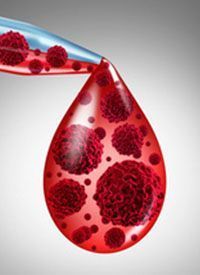EMA Grants PRIME Designation to Iopofosine I-131 for Waldenström Macroglobulinemia
The European Medicines Agency has granted Priority Medicines designation to iopofosine I-131 for use in patients with Waldenström macroglobulinemia in patients who previously received at least 2 treatment regimens.

The European Medicines Agency (EMA) has granted Priority Medicines (PRIME) designation to iopofosine I-131 (previously CLR 131) for use in patients with Waldenström macroglobulinemia in patients who previously received at least 2 treatment regimens.1
Phospholipids form the bilayer structures of cell membranes and have been shown to increase with oncogenesis and tumor progression.2 Because iopofosine I-131 is taken up by lipid raft microdomains expressed on tumor cells and accumulates in the cytoplasm of these cells, the agent spares normal tissue, delivers iodine-131 directly into the cancer cells, and induces apoptosis.
The safety and efficacy of the small molecule phospholipid drug conjugate is currently under investigation in patients with select B-cell malignancies as part of the phase 2 CLOVER-1 trial (NCT02952508), with a pivotal expansion in Waldenström macroglobulinemia (CLOVER-WaM).3 The trial is expected to be complete in the second half of 2023.1
“PRIME designation from the EMA further underscores our confidence in iopofosine I-131 to provide a differentiated and highly needed new treatment option for patients with Waldenström macroglobulinemia,” James Caruso, president and chief executive officer of Cellectar Biosciences, Inc., stated in a press release.1 “We expect to release top-line data from the CLOVER-WaM pivotal trial in the fourth quarter of 2023 and submit our new drug application in March 2024.”
Part A of the open-label trial enrolled patients with multiple myeloma, indolent chronic lymphocytic leukemia/small lymphocytic lymphoma, lymphoplasmacytic lymphoma (LPL) or Waldenström macroglobulinemia, marginal zone lymphoma (MZL), mantle cell lymphoma (MCL), diffuse large B-cell lymphoma (DLBCL), and central nervous system lymphoma (CNSL) who received prior standard therapy for their disease.3 Part B enrolled patients with Waldenström macroglobulinemia who previously received at least 2 lines of therapy.
Patients needed to be at least 18 years of age, have an ECOG performance status ranging from 0 to 2, have a life expectancy of at least 6 months, a platelet count of at least 75,000/µL, a white blood cell count of at least 3000/µL, an absolute neutrophil count of at least 1500/µL, hemoglobin of at least 9 g/dL, an estimated glomerular filtration rate of at least 30 mL/min/1.73 m2, aspartate and alanine aminotransferase up to 2.5 × upper limit of normal (ULN), bilirubin of less than 1.5 × ULN, and an international normalized ratio of less than 2.5.
The primary end point of the part A portion of the trial was clinical benefit rate (CBR) and secondary end points included overall response rate (ORR), progression-free survival, time to next treatment, overall survival, and duration of response (DOR). For part B, the primary end point was major response rate, with secondary end points of ORR, treatment-free survival, DOR, and CBR.
Interim findings from the DLBCL cohort of CLOVER-1 were shared in 2018 and demonstrated that iopofosine I-131 elicited an ORR of 33% in patients with DLBCL with a CBR of 50% following a single administration of the agent at 250 mCi/m2. Tumor reductions were observed in 60% to more than 90% of patients.4 In February 2020, the agent was reported to have induced an ORR of 34.5% in patients with myeloma spanning all doses examined (n = 33).5 In patients with non-Hodgkin lymphoma spanning all evaluated doses (n = 20), the ORR was 42%.
Additional data subsequently released in August 2020 showed that iopofosine I-131 elicited an ORR of 100% in patients with relapsed LPL/Waldenström macroglobulinemia; this included a complete response rate of 25% and a partial response or better rate of 75% in the 4 patients who received the agent.6 The median DOR in these patents exceeded 17 months (range, 8.4-31.7). Following 2 or 4 doses, three-fourths of patients experienced a major response to treatment. In September 2020, data on patients with triple-class refractory multiple myeloma (n = 6) who received iopofosine I-131 at a total administered dose of at least 60 mCi/m2 were reported, and the ORR achieved with the agent in this group was 40%.7
“With PRIME designation now in hand, we look forward to advancing our European Union [EU] strategy to bring this potential targeted treatment option to patients in the United States and EU as quickly as possible,” Caruso added in the press release.1
Previously, the FDA granted fast track designations to iopofosine I-131 for patients with LPL or Waldenström macroglobulinemia who previously received at least 2 regimens, patients with relapsed or refractory multiple myeloma, and patients with relapsed or refractory DLBCL.
References
- Cellectar Biosciences receives European Medicines Agency Priority Medicines (PRIME) designation for iopofosine for Waldenstrom’s macroglobulinemia. News release. Cellectar Biosciences, Inc. September 18, 2023. Accessed September 18, 2023. https://www.cellectar.com/news-media/press-releases/detail/310/cellectar-biosciences-receives-european-medicines-agency
- Iopofosine. Cellectar Biosciences, Inc. website. Accessed September 18, 2023. https://www.cellectar.com/product-pipeline/iopofosine
- Study of iopofosine I 131 (CLR 131) in select B-cell malignancies (CLOVER-1) and pivotal expansion in Waldenstrom macroglobulinemia (CLOVER-WaM). ClinicalTrials.gov. Updated August 21, 2023. Accessed September 18, 2023. https://classic.clinicaltrials.gov/ct2/show/NCT02952508
- Cellectar reports positive phase 2 interim data for CLR 131 in relapsed/refractory DLBCL patients. News release. Cellectar Biosciences, Inc. July 18, 2018. Accessed September 18, 2023. https://www.cellectar.com/news-media/press-releases/detail/182/cellectar-reports-positive-phase-2-interim-data-for-clr-131
- Cellectar Biosciences announces CLR 131 achieves primary efficacy endpoints from its phase 2 CLOVER-1 study in relapsed/refractory B-cell lymphomas and completion of the phase 1 relapsed/refractory multiple myeloma dose escalation study. News release. Cellectar Biosciences, Inc. February 19, 2020. Accessed September 18, 2023. https://www.cellectar.com/news-media/press-releases/detail/234/cellectar-biosciences-announces-clr-131-achieves-primary
- Ailawadhi S, Longcor J, Oliver K, et al. CLR 131 demonstrates 100% overall response rate in relapsed or refractory lymphoplasmacytic lymphoma (LPL)/Waldenstrom’s macroglobulinemia (WM): initial results from ongoing phase 2 trial, CLOVER-1 study. Blood Cancer Discov. 2020;1(suppl 3):PO-25. doi:10.1158/2643-3249.LYMPHOMA-PO-25
- Cellectar reports data on CLR 131 phase 2 CLOVER-1 study in triple class refractory multiple myeloma patients. News release. Cellectar Biosciences, Inc. September 9, 2020. Accessed September 18, 2023. https://www.cellectar.com/news-media/press-releases/detail/248/cellectar-reports-data-on-clr-131-phase-2-clover-1-study-in



